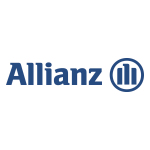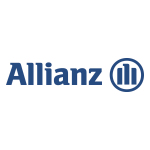Emerging Hydrogen Industry Can Help Tackle Climate Change, But Managing Complex Risks is Key: Allianz
- Driven by climate change, the possibilities of energy storage, use as a fuel and ultimate replacement for reliance on coal and oil, hydrogen has the potential to morph from a niche power source into big business.
- New bulletin from AGCS highlights operational risks that need to be addressed in hydrogen projects, including fire and explosion hazards, impact of embrittlement and business interruption exposures.
- AGCS sees increasing demand for insurance coverage for hydrogen solutions in future.
NEW YORK–(BUSINESS WIRE)–#climatechange–Promoted by governmental funding programs worldwide, hydrogen is predicted to play a leading role in the energy transition towards a low-carbon economy. As an alternative to fossil fuels like oil and coal, hydrogen solutions could be key for tackling climate change in the future, helping many industries to reduce their carbon emissions. While hydrogen technology has been in use for decades, currently planned mega projects require a scaling up of risk management.
A new bulletin from Allianz Global Corporate & Specialty (AGCS) highlights some of the opportunities and challenges of the emerging hydrogen industry, stressing that potential risks around the production, storage and transportation of hydrogen – most notably fire and explosion but also technical failure and business interruption – need to be proactively managed.
“Hydrogen (produced from low-carbon or even renewable energies) is of growing importance for the substitution of fossil fuels in the fields of energy, supply, mobility and industry,” says Chris van Gend, Global Head of Energy and Construction at AGCS. “It has the potential to morph from a niche power source into big business, with countries committing billions to scale up their infrastructure and with projects being introduced around the globe. Despite these successes, there are challenges to overcome for hydrogen to become a major part of the energy transition, such as the cost of production, supply chain complexity and a need for new safety standards.”
Backed by governments: Over 30 countries have produced hydrogen roadmaps
The global shift toward decarbonization has triggered strong momentum in the hydrogen industry. Hydrogen offers several options for the transition towards a low-carbon economy: as an energy carrier and storage medium for conversion back to electricity, as a fuel for all means of transport and mobility and as a potential substitute for fossil hydrocarbons in industries such as steel production or petrochemicals.
Around the world, there is strong governmental commitment for hydrogen initiatives, backed by financial support and regulation: As of the beginning of 2021, over 30 countries have produced hydrogen roadmaps and governments worldwide have committed more than $70bn in public funding, according to McKinsey. There are more than 200 large-scale production projects in the pipeline.
In the US, more than 30 states have already adopted action plans to promote hydrogen technology. The goal is to build a broad-based hydrogen industry that will generate $140bn in annual income and employ 700,000 people by 2030.
Assessing the risk environment
Many of the technologies used for the generation of hydrogen or energy from hydrogen are well known in principle. “Today the vast majority of hydrogen is produced and used on site in industry. What is new is that the type and scale of its adaption is changing fundamentally, with the expected rapid growth of plants in future. We see the advent of giga-scale projects in many countries with various new players entering the market and established players sizing up – and risk management has to keep pace,” says Thomas Gellermann, an AGCS risk consultant and expert at Allianz Center for Technology.
From a technology perspective, the following operational risks are highlighted in the AGCS bulletin:
-
Fire and explosion hazards: The main risk when handling hydrogen is of explosion when mixed with air. In addition, leaks are hard to identify without dedicated detectors since hydrogen is colorless and odorless. A hydrogen flame is almost invisible in daylight. Statistics show approximately one in four hydrogen fires can be attributed to leaks, with around 40% being undetected prior to the loss.
An AGCS analysis of more than 470,000 claims across all industry sectors over five years shows how costly the risk of fire and explosion can be. Fire and explosions caused considerable damage and destroyed values of more than €14bn ($16.7bn) over the period under review. Excluding natural disasters, more than half of the 20 largest insurance losses analyzed were due to this cause, making it the number one cause of loss for businesses worldwide.
- Material embrittlement: Diffusion of hydrogen can cause metal and steel (especially high-yield steels) to become brittle and a wide range of components could be affected such as piping, containers or machinery components. In conjunction with embrittlement, hydrogen-assisted cracking (HAC) can occur. For the safety of hydrogen systems, it is important that problems such as the risk of embrittlement and HAC are taken into account in the design phase.
- Business interruption exposures: Hydrogen production or transport typically involves high-tech equipment and failure to critical parts could result in severe business interruption (BI) and significant financial losses. For example, in case of damage to electrolysis cells (used in water electrolysis) or heat exchangers in liquefaction plants it could take weeks, if not months to replace such essential equipment, resulting in production delays. In addition, BI costs following a fire can significantly add to the final loss total. For example, AGCS analysis shows that across all industry sectors, the average BI loss from a fire incident is around 45% higher than the average direct property loss – and in many cases the BI share of the overall claim is much higher, especially in volatile segments such as oil and gas.
Significant increase in demand for insurance expected
While standalone hydrogen projects have been rare in the insurance market to date, hydrogen production as part of integrated refining and petrochemical facilities, and as a part of AGCS’ coverage of industrial gas programs in its property book, has long been a staple of AGCS’ insurance portfolio. Given the numerous projects planned around the world, insurers can expect to see a significant increase in demand for coverage in future to construct and operate electrolysis plants or pipelines for hydrogen transportation.
“As with any energy risk, fire and explosion is a key peril. Business interruption and liability exposures are also key as are transit, installation and mechanical failure risks,” van Gend explains. He expects a significant ramp up in opportunities to which AGCS aims to respond in a proactive manner. “We are developing a more detailed underwriting approach for hydrogen projects, ensuring that we can serve clients globally. There is rightly great enthusiasm around hydrogen solutions as a key driver towards a low-carbon economy, but we shouldn’t overlook that these projects involve complex industrial and energy risks and require high levels of engineering expertise and insurance know-how in order to be able to provide coverage. We will apply the same rigor in risk selection and underwriting for hydrogen projects that we do on our existing energy construction and operational business.”
For the full overview of loss prevention measures for the hydrogen economy download here.
About Allianz Global Corporate & Specialty
Allianz Global Corporate & Specialty (AGCS) is a leading global corporate insurance carrier and a key business unit of Allianz Group. We provide risk consultancy, Property-Casualty insurance solutions and alternative risk transfer for a wide spectrum of commercial, corporate and specialty risks across 10 dedicated lines of business.
Our customers are as diverse as business can be, ranging from Fortune Global 500 companies to small businesses, and private individuals. Among them are not only the world’s largest consumer brands, tech companies and the global aviation and shipping industry, but also satellite operators or Hollywood film productions. They all look to AGCS for smart answers to their largest and most complex risks in a dynamic, multinational business environment and trust us to deliver an outstanding claims experience.
Worldwide, AGCS operates with its own teams in 31 countries and through the Allianz Group network and partners in over 200 countries and territories, employing over 4,400 people. As one of the largest Property-Casualty units of Allianz Group, we are backed by strong and stable financial ratings. In 2020, AGCS generated a total of €9.3 billion gross premium globally.
Cautionary Note Regarding Forward-Looking Statements
Contacts
Sabrina Glavan
Allianz Global Corporate & Specialty
973 876 3902
[email protected]
Erin Burke
Harden Communications Partners
631 239 6903
[email protected]
Article Source

